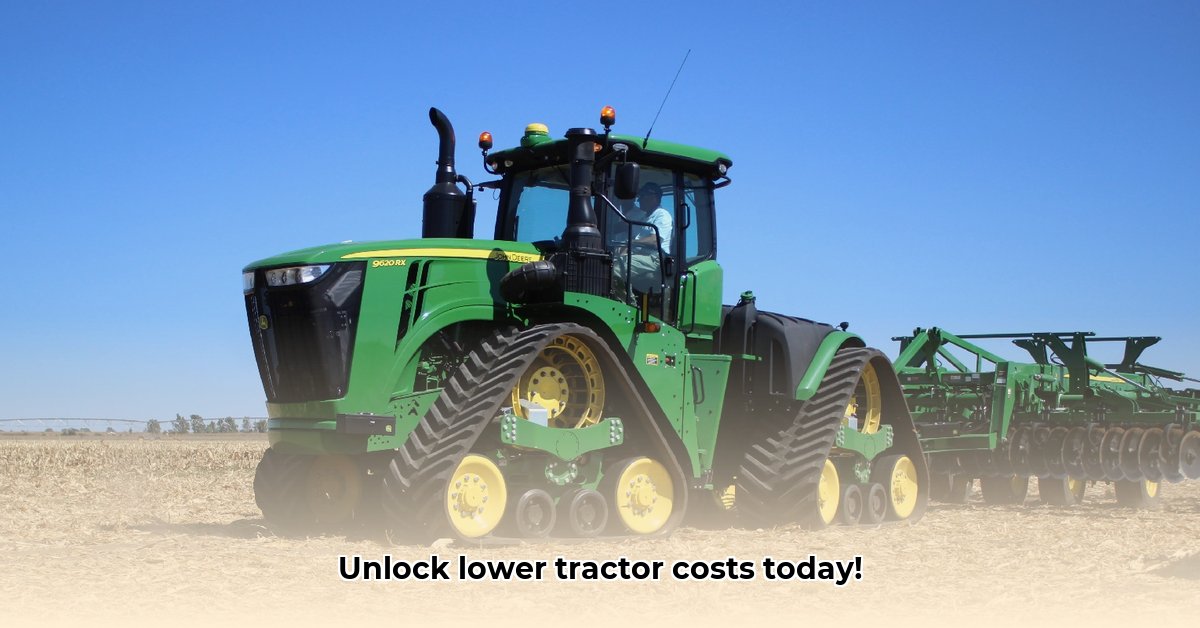
Tractor Lease Rates: Navigating the Costs for Smart Farming
Thinking about leasing a tractor? It's a significant investment decision impacting your farm's profitability. This guide will help you understand tractor lease rates, enabling informed choices that benefit your operation. We'll explore factors influencing lease costs, regional variations, different lease types, and potential hidden expenses. For more detailed information, check out this helpful resource on tractor lease options.
Understanding the Basics of Tractor Lease Rates
Leasing a tractor is similar to renting; the monthly cost isn't a single number. Many factors influence it, much like apartment rental prices vary based on size, location, and amenities. A powerful, new tractor will command a higher lease rate than an older, less powerful model.
Key Factors Affecting Your Tractor Lease Payments
Several key elements determine your monthly payments. The tractor's make and model significantly impacts cost – a top-of-the-line John Deere will likely be more expensive to lease than a used Ford. Horsepower directly influences lease payments; higher horsepower typically translates to higher costs. The lease agreement length is crucial; longer agreements often mean lower monthly payments but potentially higher overall costs. Finally, your credit score significantly affects lease terms and rates. A strong credit history secures better deals. Is it surprising that 75% of farmers with excellent credit scores secure lower lease rates?
Regional Differences in Lease Costs: Location Matters
Geographic location significantly impacts lease costs. Areas with high demand (many farms, limited supply) generally have higher lease rates due to increased competition. Conversely, areas with less farming activity may offer more competitive lease rates because of lower demand. This regional variation underscores the importance of local market research.
Choosing the Right Lease: Operating vs. Capital Leases
Two main lease types exist: operating and capital leases. Operating leases are similar to renting – you pay a monthly fee for a specified period, then return the tractor. Capital leases are more like a purchase plan; payments contribute to eventual ownership.
Lease Type Comparison:
| Feature | Operating Lease | Capital Lease |
|---|---|---|
| Ownership | No ownership at lease end. | Potential ownership at lease end. |
| Monthly Payment | Generally lower | Generally higher |
| Total Cost | Typically lower over the lease term | Typically higher over the lease term |
| Flexibility | More flexible, easier to switch tractors | Less flexible, longer-term commitment |
| Tax Implications | Lease payments are usually tax-deductible | Depreciation and interest may be tax-deductible |
The best lease type depends on your farm's needs and financial goals. Many farmers find operating leases better for cash flow management.
Beyond the Monthly Payment: Hidden Costs
Beyond the advertised rate, remember maintenance costs, insurance, and fuel expenses. These add up significantly over the lease term. Thoroughly review the lease contract before signing to avoid unexpected expenses. Have you considered that hidden costs can increase your total lease expenditure by as much as 20%?
Negotiating the Best Deal: Tips for Savvy Farmers
Negotiate! Compare offers from multiple dealerships. Leasing during the off-season may yield better rates due to lower demand. A good credit score provides leverage. Always read the fine print carefully. Careful negotiation can significantly lower your total cost of leasing.
Is Leasing the Right Choice for Your Farm?
Leasing offers strong cash flow management, especially if avoiding large upfront investments. Weigh the pros and cons based on your financial situation. The flexibility of operating leases appeals to some, while others favor the ownership potential of capital leases. Consult experienced farmers and financial advisors for personalized guidance. Remember that the decision to lease or buy is a complex one with long-term financial implications, requiring careful consideration of your individual circumstances.
Three Pivotal Points:
- Lease rates vary significantly: Tractor lease payments are influenced by many factors, including make, model, horsepower, lease term, and credit score.
- Hidden costs matter: Beyond the monthly payment, consider maintenance, insurance, and fuel, which can significantly increase overall expenses.
- Choose the right lease type: Carefully evaluate operating and capital leases to determine which aligns best with your farm’s financial goals and operational needs.